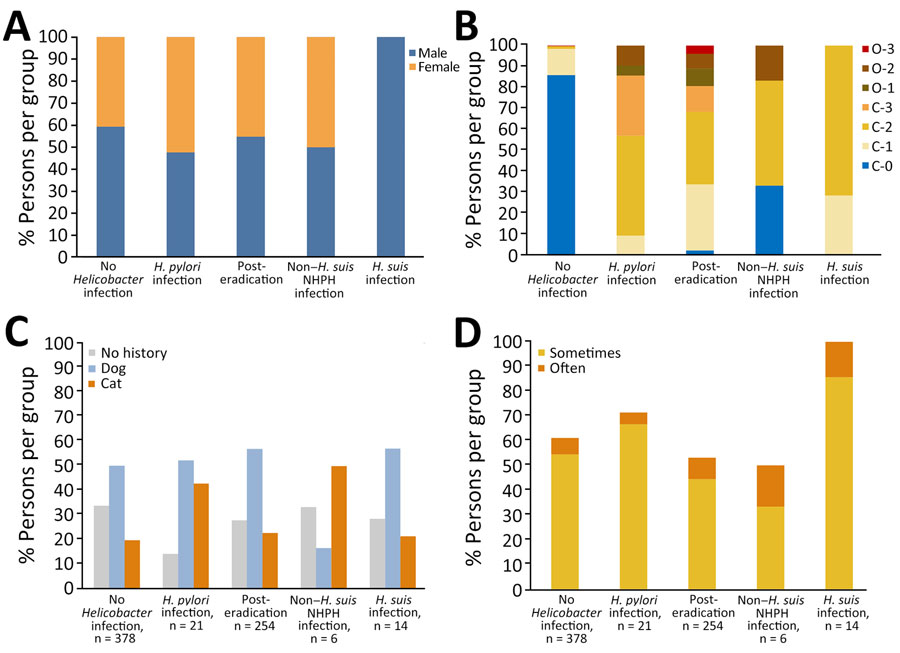Volume 31, Number 6—June 2025
Research
Prospective Multicenter Surveillance of Non–H. pylori Helicobacter Infections during Medical Checkups, Japan
Figure 2

Figure 2. Comparison of patient groups stratified by gastric Helicobacter infection status in study of NHPH infections, Japan, 2022. A) Percentage of men and women in each group. All patients in the H. suis infection group were men. Prevalence of the male sex was significantly higher in the H. suis infection group than in the no Helicobacter infection (59.3%), H. pylori infection (47.6%), posteradication (54.7%), and non–H. suis NHPH infection (50.0%) groups. B) Percentages of patients categorized by each atrophic grade were compared between groups stratified by gastric Helicobacter infection status. In the H. suis infected group, 71.4% were C-2, with no higher grade of atrophy. C-0, no atrophy; C-1 and C-2, mild atrophy; C-3 and O-1, moderate atrophy; O-2 and O-3, severe atrophy. C) Percentages of patients who had no history of pets or who had a history of having pet dogs or cats. No significant differences were observed between the groups, although the proportion of patients with pet cats appeared higher (50%) in the non–H. suis NHPH infection group than in the no Helicobacter infection (19.8%) and H. suis infection (21.4%) groups. D) Patients in each infection group were subdivided into those who sometimes or those who often ingested pork offal. All patients in the H. suis infection group had a history of pork offal ingestion. Prevalence of patients with any history of pork offal ingestion was significantly higher in the H. suis infection group (100%) than in the no Helicobacter infection (61.1%; p = 0.0014), posteradication (53.1%; p = 0.0003), and non–H. suis NHPH infection (50.0%; p = 0.0175) groups. NHPH, non–H. pylori Helicobacter.
1These authors contributed equally to this article.